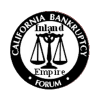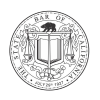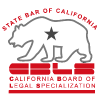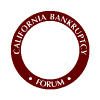What types of fraud can be non-dischargeable?
One of the most common adversary proceedings brought by creditors under the non-dischargeability provisions outlined in 11 U.S.C. §523 are those that are based on “fraudulent behavior”. The fraud covered by these provisions relates to a single creditor-debtor relationship and does not consider fraudulent behavior within the context of the bankruptcy itself. Fraudulent behavior within the context of bankruptcy, such as concealment of assets from the bankruptcy trustee, is covered by the denial/revocation of discharge provisions of 11 U.S.C. §727.
The most common fraud-based non-dischargeability claims brought by creditors are:
- 11 U.S.C. §523(a)(2)(A) – Fraud that does not involve a statement of financial condition in writing
- 11 U.S.C. §523(a)(2)(B) – Fraud that does involve a statement of financial condition in writing
- 11 U.S.C. §523(a)(2)(C) – Presumptive fraud based on incurring debt immediately prior to bankruptcy. *These are less common since you can just wait 70-90 days to file a case and the section is inapplicable*
- 11 U.S.C. §523(a)(4) – Fraud or defalcation while acting in a fiduciary capacity, embezzlement, larceny
It is not unusual that a creditor files such an adversary complaint, but then alleges fraud generally (i.e., without alleging the specific facts which support the elements of fraud). Since these lawsuits often frivolous and can be based on little evidence with the hope that more evidence will later be discovered. The Federal Rules of Civil and Bankruptcy Procedure have created a gatekeeping device in the form of a “heightened pleading standard” which requires that the initial adversary complaint be subject to greater scrutiny as outlined below:
The Heightened Pleading Standard: Federal Rule of Civil Procedure 9(b)
FRCP Rule 9(b) (incorporated into Bankruptcy Proceedings by FRBP 7009), which requires “[i]n alleging fraud or mistake, a party must state with particularity the circumstances constituting fraud or mistake.” – this requires that the plaintiff specify the who, what, when, where, why, and how facts that lead to a reasonable inference of fraudulent intent. In a case before the Bankruptcy Appellate Panel of the Ninth Circuit, In re Englander, 92 B.R. 425 (B.A.P. 9th Cir. 1988), the court held that this heightened pleading standard requires that the party alleging fraud must “state with particularity the underlying facts and the wrong alleged so that the broad policy of the federal rules to fairly apprise parties of the complaint against them in sufficient detail to allow them to adequately answer and prepare their defense is ensured.” See In re Englander, supra, at p. 427; see also In re Jenkins, 83 B.R. 733, 735 (B.A.P. 9th Cir. 1988). Another effect of Rule 9(b) is that the heightened pleading standard precludes the use of discovery to supply the facts necessary to state the claim, as these facts must be plead in the initial complaint. See In re Daniell, BAP EC-12-1506-PAJUK, 2013 WL 5933657 (B.A.P. 9th Cir. Nov. 6, 2013)(unpublished). Moreover, while “scienter” or intent may usually be plead in general terms, the same is not true with allegations of fraud, which must be sufficiently specific as to apprise the accused of the exact nature of the wrongdoing of which he or she is being accused. The Second Circuit, in In re Dreier, LLP, 452 B.R. 391 (Bankr. S.D.N.Y. 2011), specified the elements that satisfy 9(b)’s heightened pleading standard: “The Second Circuit has stated that the complaint must: ‘(1) detail the statements (or omissions) that the plaintiff contends were fraudulent, (2) identify the speaker, (3) state where and when the statements (or omissions) were made, and (4) explain why the statements (or omissions) were fraudulent.’ Harsco Corp. v. Sequi, 91 F.3d 337, 347 (2d Cir. 1996 (citations omitted). Although the second part of Rule 9(b) permits scienter to be pleaded generally, the pleader must ‘allege facts that give rise to a strong inference of fraudulent intent.’ Shields v. Citytrust Bancorp., Inc., 25 F.3d 1124, 1128 (2d Cir. 1994) (citation omitted); see also The Responsible Pers. of Musicland Holding Corp v. Best Buy Co., Inc., (In re Musicland Holding Corp.), 398 B.R. 761, 773 (Bankr S.D.N.Y. 2008).” See In re Dreier, LLP, supra, at p. 408. Reduced to its simplest terms, Rule 9(b) is intended to promote fundamental fairness by providing a party charged with wrongdoing with notice of exactly what it is that he or she is alleged to have done so that their defense to these allegations can be prepared. Rule 9(b) is also intended to discourage lawsuits that would have a damaging impact upon the defendant’s reputation and goodwill unless the plaintiff is able to fairly apprise the defendant of the exact facts and circumstances of their allegedly wrongful conduct. Rule 9(b) is also intended to reduce the likelihood of lawsuits being filed for the sole purpose of trying to obtain a settlement (strike suits) and to relieve the courts of the social and economic costs of these ungrounded lawsuits: The purpose of Rule 9(b) is to further three goals: “(1) providing a defendant fair notice of plaintiff’s claim, to enable preparation of defense; (2) protecting a defendant from harm to his reputation or goodwill; and (3) reducing the number of strike suits.” Di Vittorio v. Equidyne Extractive Indus. Inc., 822 F.2d 1242, 1247 (2d Cir. 1987).The same standards of pleading hold in the Ninth Circuit that control in the Second Circuit as the Ninth Circuit stated in Bly-Magee v. Cal., 236 F.3d 1014 (9th Cir. 2011):In most cases, the Federal Rules of Civil Procedure require only that pleadings contain a short and plain statement of the claims. Fed. R. Civ. P. 8. Federal Rule of Civil Procedure 9(b), however, requires that “in all averments of fraud or mistake, the circumstances constituting fraud or mistake shall be stated with particularity.” Fed. R. Civ. P. 9(b). Rule 9(b) serves not only to give notice to defendants of the specific fraudulent conduct against which they must defend, but also “to deter the filing of complaints as a pretext for the discovery of unknown wrongs, to protect [defendants] from the harm that comes from being subject to fraud charges, and to prohibit plaintiffs from unilaterally imposing upon the court, the parties, and society enormous social and economic costs absent some factual basis.” In re Stac Elec. Sec. Liti., 89 F.3d 1399, 1405 (9th Cir. 1996); seealso Rolo City Invest. Co. Liquidation Tr., 155 F.3d 644, 658 (3d Cir. 1998)(“The purpose of Rule 9(b) is to provide notice of the ‘precise misconduct with which defendants are charged and to prevent false or unsubstantiated charges.”); IUE AFL-CIO Pension Fund v. Herrmann, 9 F.3d 1049, 1057 (2d Cir. 1993)(9(b)’s heightened pleading requirement alerts defendants to specific facts upon which a fraud claim is based and safeguards a “defendant’s reputation and goodwill from improvident charges of wrongdoing.”). See Bly-Magee v. Cal., supra, at p. 1018.
Related posts:
- Are Auto Accident Debts Discharged in Bankruptcy?
Debts that result in personal injury or property damage can be non-dischargeable in a bankruptcy... - How to Keep a Vehicle in Bankruptcy through §722 Redemption
What debts, if any, can be reorganized or modified in a Chapter 7? In the... - New 2021 California Bank Levy Exemptions
The bank account levy laws prior to 2021 It used to be that if a...


